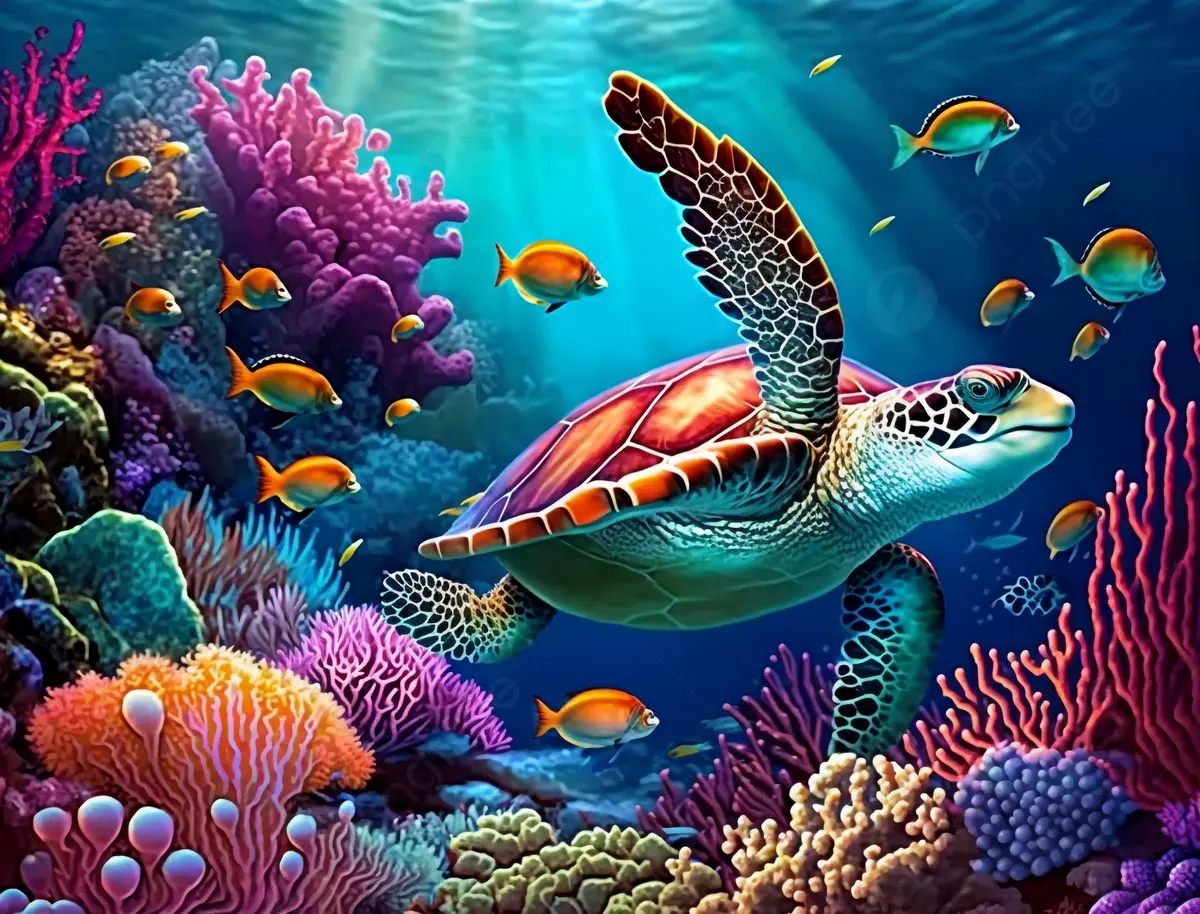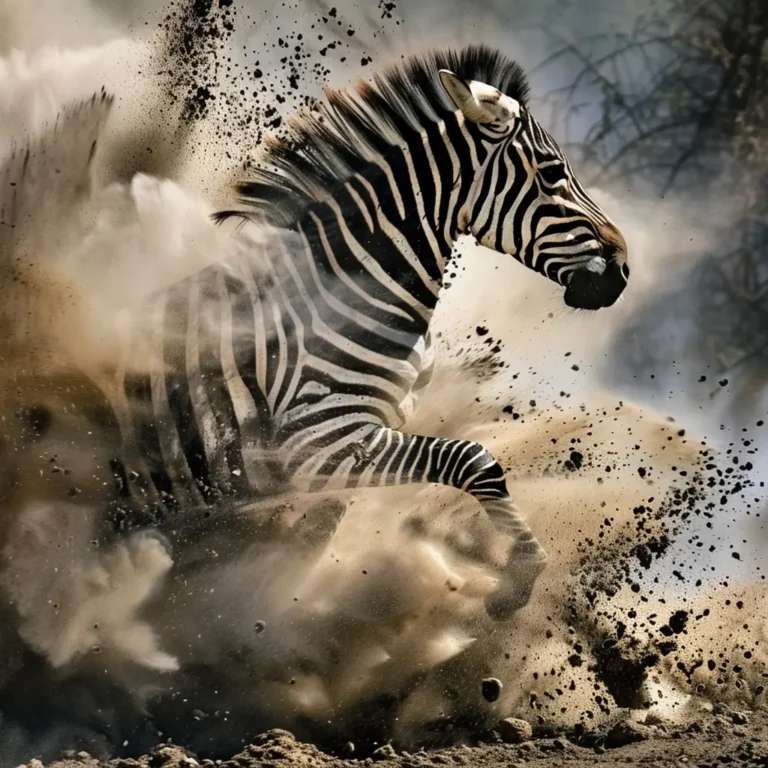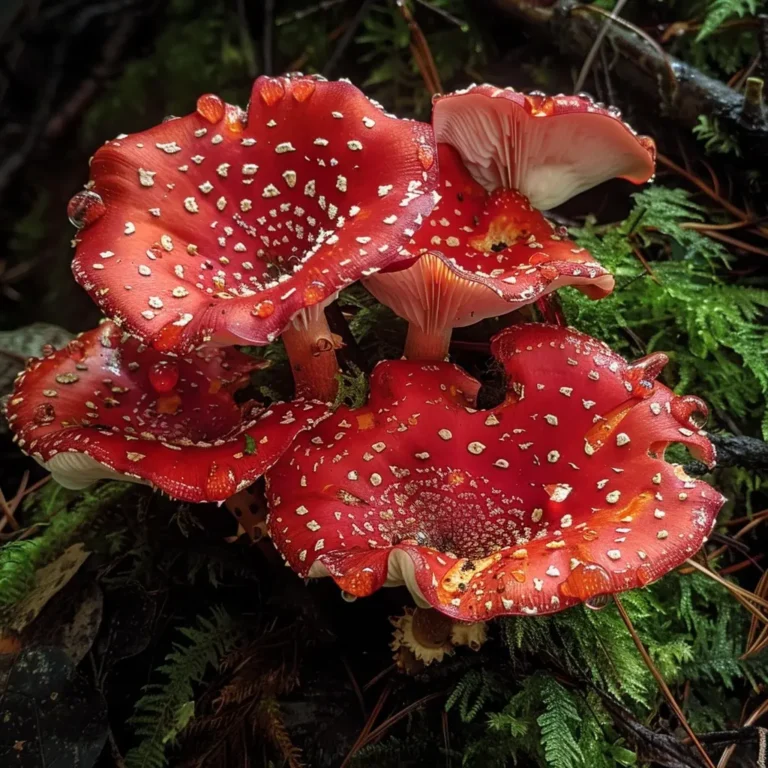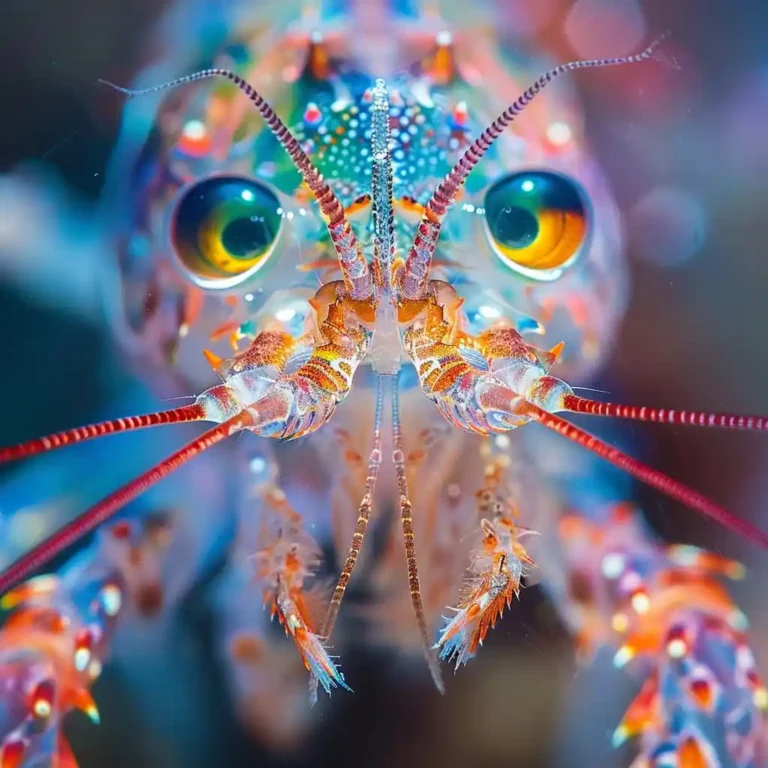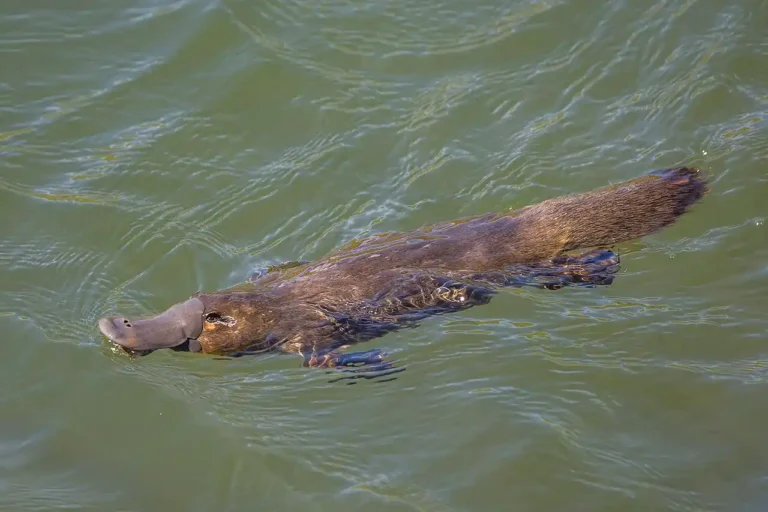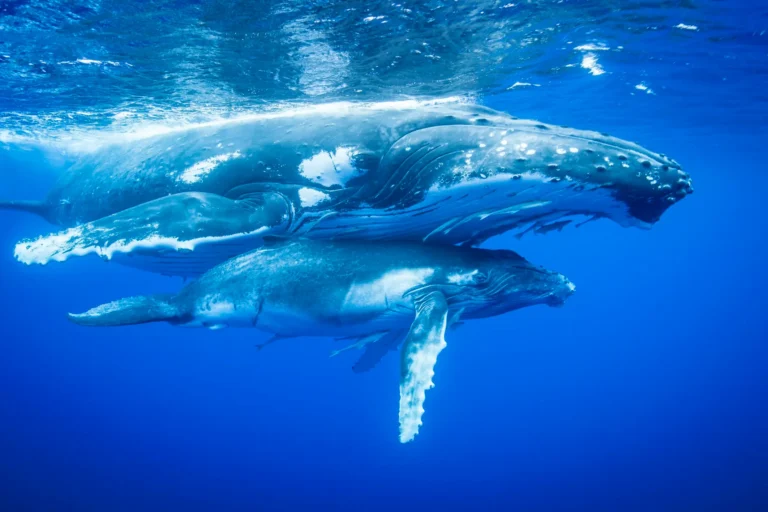Fun facts about sea animals that will blow your mind! 🌊🐙 Dive into the depths of the ocean and discover the extraordinary traits and behaviors of its most fascinating inhabitants.
From the amazing adaptations of jellyfish to the surprising skills of dolphins, get ready for a tidal wave of incredible marine trivia that will leave you in awe. Explore these aquatic marvels and be amazed by the wonders beneath the waves!
Interested in other animal’s facts, check out our curated list for more fun facts about animals.
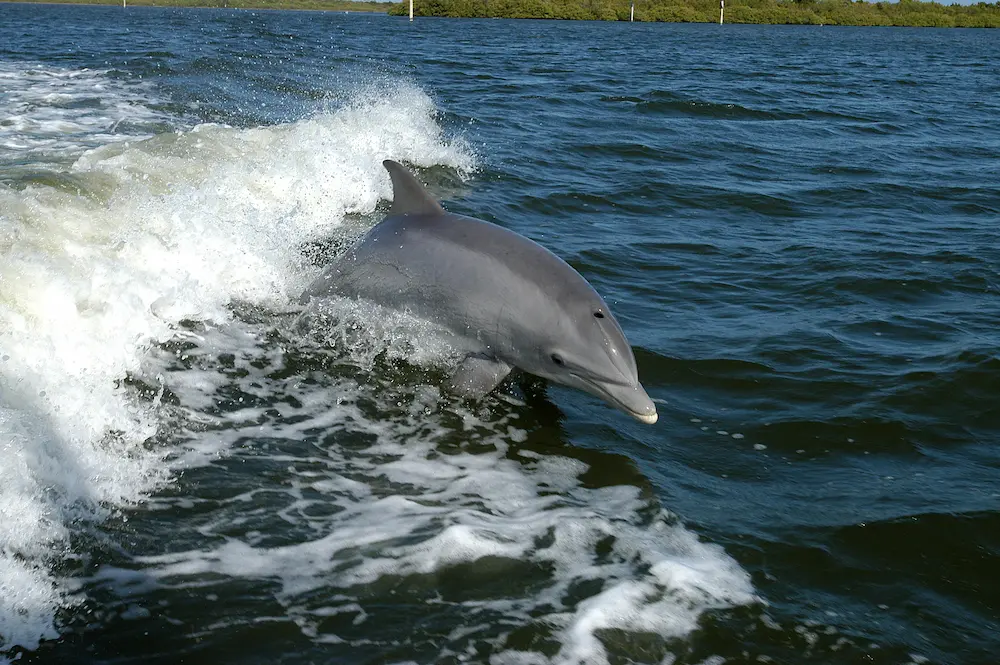
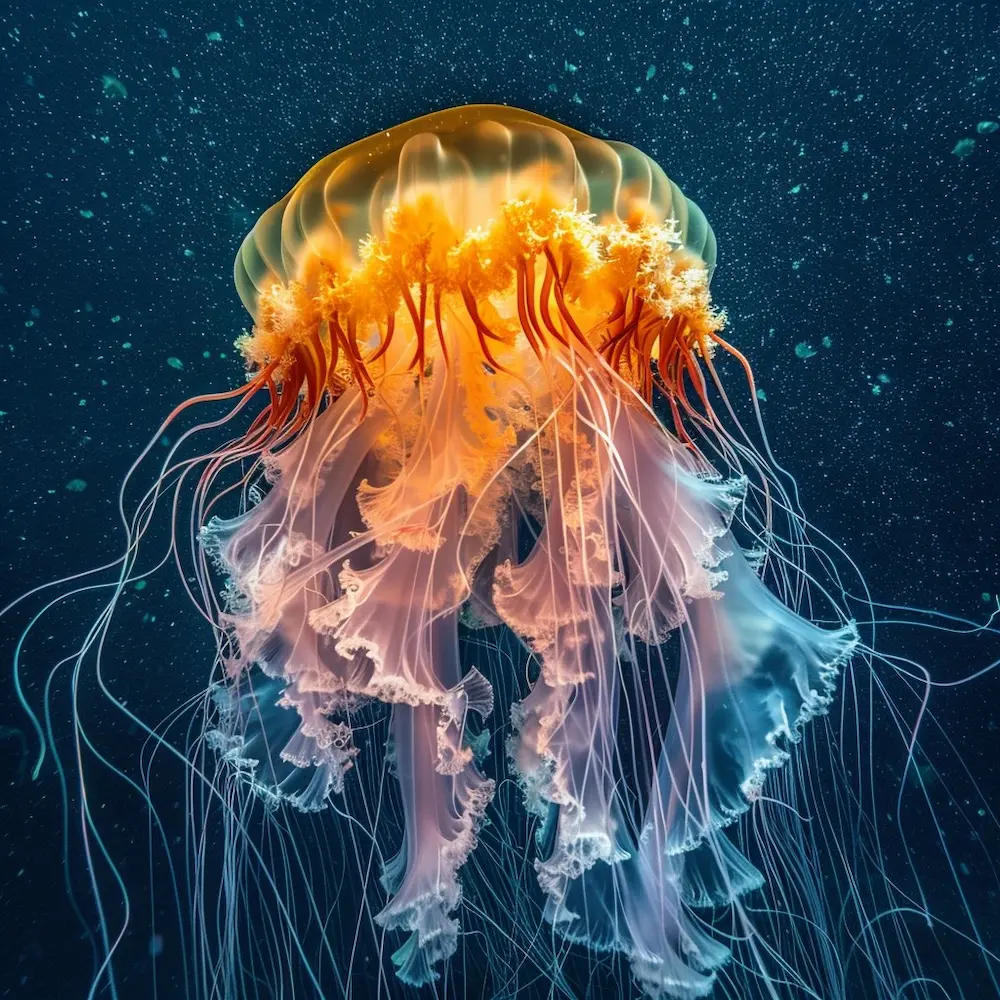
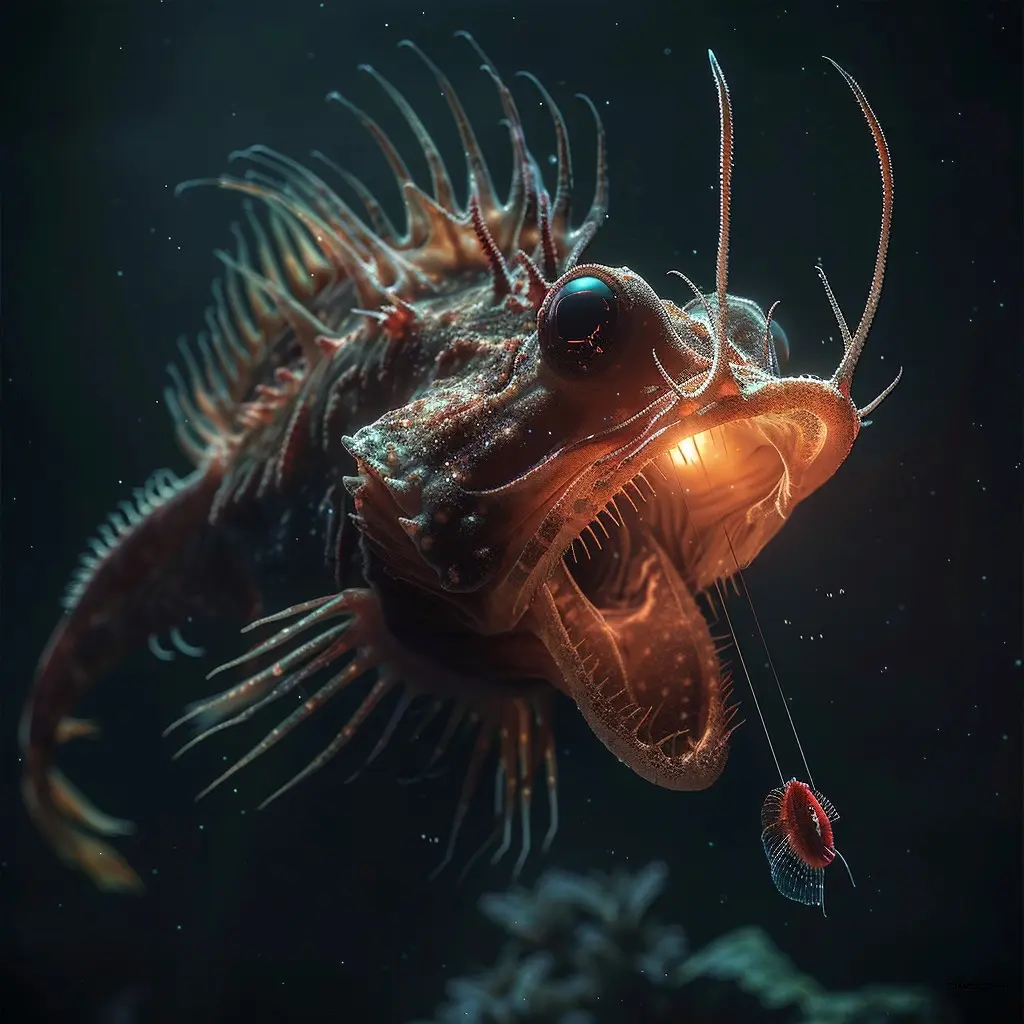
Random Facts about Sea Animals
1. The blue whale is the largest animal on Earth.
The blue whale can reach lengths of up to 100 feet (30 meters) and weigh as much as 200 tons (approximately 181 metric tonnes). Their heart alone can weigh as much as a small car, and they consume around 4 tons of krill daily during feeding season. Blue whales are filter feeders, using baleen plates to strain krill from the water.
2. Sea otters have a secret pocket of skin near their armpits.
Sea otters have a pouch-like fold of skin that allows them to store food like sea urchins and crabs while they float on their backs. This adaptation helps them keep their food close and makes it easier to eat while resting in the water.
3. Dolphins sleep with one eye open.
Dolphins are voluntary breathers, meaning they must consciously come to the surface to breathe. To rest, they shut down one hemisphere of their brain while keeping the other half alert, allowing them to maintain awareness of their surroundings and avoid predators.
4. The octopus has three hearts.
Two of the hearts pump blood to the gills, where it picks up oxygen, while the third heart pumps the oxygenated blood to the rest of the body. Interestingly, when an octopus swims, the heart that delivers blood to the rest of the body stops beating, which is why they prefer to crawl rather than swim.
5. Seahorses are the only species where the male gives birth.
In seahorses, the male carries fertilized eggs in a special pouch on his abdomen until they hatch. This unique reproductive strategy allows the female to produce more eggs while the male carries the current batch to term.
6. Jellyfish have been around for over 500 million years.
Jellyfish are one of the oldest living creatures on Earth, predating dinosaurs and even trees. Their simple body structure allows them to thrive in various marine environments, and some species can survive in both saltwater and freshwater.
7. Clownfish can change gender.
In a group of clownfish, the dominant female will change the largest male into a female if she dies. This adaptation ensures that there is always a breeding pair in the group, allowing for the continuation of their species.
8. The immortal jellyfish can revert to its juvenile form.
The Turritopsis dohrnii jellyfish can revert to its polyp stage after reaching maturity, effectively allowing it to escape death and start its life cycle anew. This remarkable ability makes it biologically immortal under certain conditions.
9. Some species of fish can produce electric shocks.
Electric eels and electric rays can generate electric fields to stun prey and defend themselves against predators. Electric eels can produce shocks of up to 600 volts, which is powerful enough to incapacitate a human.
10. The anglerfish uses bioluminescence to attract prey.
The anglerfish has a bioluminescent lure on its head that emits light, attracting smaller fish in the dark depths of the ocean. Once the prey approaches, the anglerfish quickly snaps its jaws to catch it.
11. Sea turtles can hold their breath for several hours.
Depending on the species, sea turtles can dive for long periods without surfacing for air. They can slow their heart rate and use oxygen more efficiently, allowing them to remain submerged for extended periods.
12. The narwhal is known as the “unicorn of the sea.”
Male narwhals have a long, spiral tusk that can grow up to 10 feet (3 meters) long. This tusk is actually an elongated tooth and is thought to play a role in mating displays and social interactions.
13. Some fish can change color to blend in with their surroundings.
Species like the cuttlefish and octopus can rapidly change their skin color and texture to camouflage themselves from predators or to communicate with others. This ability is due to specialized cells in their skin called chromatophores.
14. The great white shark can detect a drop of blood in the water from miles away.
Great white sharks have an extraordinary sense of smell, allowing them to detect blood and other chemicals in the water at extremely low concentrations. This sensitivity helps them locate prey from great distances.
15. The box jellyfish is one of the most venomous creatures in the world.
The venom of the box jellyfish can cause severe pain, heart failure, and even death in humans. Its tentacles contain thousands of specialized cells called nematocysts that can deliver a potent sting.
16. Sea slugs are known for their vibrant colors and unique shapes.
Nudibranchs, a type of sea slug, come in various colors and patterns, which can serve as a warning to predators about their toxicity. Some species can even incorporate the stinging cells from the jellyfish they consume into their own bodies for protection.
17. The hammerhead shark has a unique head shape.
The wide, flattened head of the hammerhead shark enhances its ability to detect prey and navigate the ocean. The shape of its head allows for a better field of vision and improved sensory perception.
18. The pufferfish can inflate its body as a defense mechanism.
When threatened, pufferfish can swallow water or air to inflate their bodies, making them larger and more difficult for predators to consume. Some pufferfish also contain toxins that can be lethal to predators.
19. The parrotfish produces sand as it eats.
Parrotfish graze on coral and other hard substrates, grinding them down with their beak-like teeth. The leftover particles are excreted as sand, contributing to the formation of sandy beaches.
20. Some species of crabs can walk sideways.
Crabs have a unique anatomy that allows them to move sideways quickly, which helps them evade predators and navigate through their environments efficiently.
21. The orca, or killer whale, is actually the largest member of the dolphin family.
Orcas are highly intelligent and social animals that live in pods, often displaying complex social behaviors and communication skills.
22. The sea cucumber can eject its internal organs as a defense mechanism.
When threatened, sea cucumbers can expel their internal organs to distract predators, allowing them to escape. Remarkably, they can regenerate these organs over time.
23. The beluga whale is known for its vocalizations.
Belugas are highly social and communicate using a variety of sounds, including whistles, clicks, and clangs, earning them the nickname “canaries of the sea.”
24. The lionfish is an invasive species in the Caribbean.
With its venomous spines, the lionfish has few natural predators in its non-native range, leading to rapid population growth and significant impacts on local ecosystems.
25. The starfish can regenerate lost arms.
If a starfish loses an arm, it can grow a new one, and some species can even regenerate a whole new body from a single arm. This ability helps them survive predation.
26. The goblin shark has a unique appearance.
With a long, flattened snout and protruding jaws, the goblin shark is often referred to as a “living fossil,” as it has changed very little over millions of years.
27. The Atlantic salmon can travel thousands of miles to spawn.
Salmon are known for their incredible migratory journeys from the ocean back to freshwater rivers where they were born, often leaping over obstacles to reach their spawning grounds.
28. The sea urchin has a hard shell covered in spines.
These spines provide protection from predators and help them move across the ocean floor. Sea urchins are also important grazers, feeding on algae and helping to maintain healthy ecosystems.
29. The manta ray can weigh up to 1,400 pounds (635 kilograms).
These gentle giants are filter feeders, consuming plankton and small fish as they glide through the water with their large mouths open.
30. The blue-ringed octopus is one of the most venomous marine animals.
Its bite can be fatal to humans, but it is usually non-aggressive unless provoked. The blue rings on its body become more vibrant when it feels threatened.
31. The nudibranch can absorb toxins from the prey it consumes.
Some species of nudibranchs can incorporate the stinging cells from the jellyfish they eat into their own bodies for protection against predators.
32. The sea turtle can live for over 100 years.
These reptiles have long lifespans and can migrate long distances between feeding and nesting grounds, often returning to the same beach where they were born.
33. The sperm whale has the largest brain of any animal on Earth.
Their brains can weigh up to 20 pounds (9 kilograms) and are highly complex, allowing for advanced social behaviors and communication.
34. The zebra shark is known for its distinctive stripes.
As they mature, their stripes fade, and they develop a spotted pattern. Zebra sharks are often found resting on the ocean floor during the day.
35. The sea anemone has a symbiotic relationship with clownfish.
Clownfish provide protection for the anemone, while the anemone offers shelter for the clownfish. This mutualistic relationship benefits both species.
36. The walrus has long tusks that can grow up to 3 feet (1 meter) long.
They use their tusks for defense, dominance displays, and hauling themselves out of the water onto ice or land.
37. The manatee is often called the “sea cow.”
These gentle herbivores graze on seagrass and can weigh up to 1,300 pounds (590 kilograms). They are slow-moving and often found in warm coastal waters.
38. The electric eel can produce a shock of up to 600 volts.
This ability helps them stun prey and defend against predators. Electric eels are capable of generating both low-voltage and high-voltage electric discharges.
39. The cuttlefish has the ability to change its color and texture.
This remarkable camouflage helps it avoid predators and catch prey. Cuttlefish can also communicate with each other through color changes.
40. The sea lion is known for its playful behavior and intelligence.
They are often seen performing tricks in marine parks and are highly social animals that live in groups called colonies.
41. The arapaima is one of the largest freshwater fish in the world.
It can grow up to 15 feet (4.5 meters) long and is native to the Amazon River, where it plays a crucial role in the ecosystem.
42. The lion’s mane jellyfish has tentacles that can reach lengths of 120 feet (36 meters).
It is one of the largest jellyfish species in the world and can deliver a painful sting to unsuspecting swimmers.
43. The anglerfish has a bioluminescent lure on its head.
This adaptation helps it attract prey in the dark depths of the ocean, where light is scarce.
44. The humpback whale is known for its complex songs.
These songs can last up to 20 minutes and are believed to play a role in mating. Male humpbacks sing during the breeding season to attract females.
45. The green sea turtle is named for the color of its fat.
Despite its name, its shell is usually brown or olive. Green sea turtles are herbivores, feeding primarily on seagrass and algae.
46. The nudibranch can absorb toxins from the prey it consumes.
Some species can even use these toxins for their own defense, making them unpalatable to predators.
47. The pufferfish can inflate its body as a defense mechanism.
When threatened, it swallows water or air to become larger and more difficult for predators to consume. Some pufferfish also contain toxins that can be lethal to predators.
48. The octopus has three hearts and blue blood.
Two hearts pump blood to the gills, while the third pumps it to the rest of the body. The blue color of their blood is due to the presence of hemocyanin, which contains copper.
49. The clownfish is immune to the stings of sea anemones.
This mutualistic relationship allows them to live safely among the anemone’s tentacles, while providing the anemone with nutrients from their waste.
50. The hammerhead shark has a unique head shape.
Its wide, flattened head enhances its ability to detect prey and navigate the ocean. The shape of its head allows for a better field of vision and improved sensory perception.
51. The sea cucumber can eject its internal organs as a defense mechanism.
When threatened, sea cucumbers can expel their internal organs to distract predators, allowing them to escape. Remarkably, they can regenerate these organs over time.
52. The leatherback sea turtle is the largest turtle species.
It can weigh over 2,000 pounds (900 kilograms) and dive to depths of 4,000 feet (1,200 meters) in search of jellyfish.
53. The giant squid has the largest eyes in the animal kingdom.
Their eyes can be as large as basketballs, helping them see in the dark depths of the ocean.
54. The narwhal’s tusk is actually an elongated tooth.
This unique feature can grow up to 10 feet (3 meters) long and is used for social interactions and possibly for sensing the environment.
55. The Portuguese man o’ war is not a jellyfish but a colonial organism.
It is made up of specialized polyps that work together to survive, and its tentacles can deliver a painful sting.
56. The box jellyfish is one of the most venomous creatures in the world.
Its tentacles can deliver a painful sting that can be fatal to humans, making it one of the most dangerous marine animals.
57. The beluga whale is known for its vocalizations.
They have a wide range of sounds, including whistles, clicks, and clangs, earning them the nickname “canaries of the sea.”
58. The parrotfish can change its gender.
Some species can switch from female to male as they mature, allowing for a balanced sex ratio in their populations.
59. The sea star can regenerate lost arms.
If a sea star loses an arm, it can grow a new one, and some species can even regenerate a whole new body from a single arm.
60. The ocean is home to the largest coral reef system.
The Great Barrier Reef is the largest living structure on Earth, stretching over 2,300 kilometers (1,430 miles) and supporting a diverse array of marine life.
References
- NOAA Fisheries. (n.d.). Fun Facts About Sea Life. Retrieved from NOAA Fisheries
- BuzzFeed. (2018). 12 Incredible Facts About Sea Animals That Will Make You Say “No Way!”. Retrieved from BuzzFeed
- More Fun Diving. (n.d.). 20 Incredible Marine Life Facts. Retrieved from More Fun Diving
- Well Beings with Alysia. (n.d.). 25 Intriguing Ocean Animal Facts for Kids. Retrieved from Well Beings with Alysia
- Exploring Creation Vids. (2023). 10 Mind-Blowing Facts About Ocean Animals You Need To Know! Retrieved from YouTube
- National Geographic. (n.d.). Ocean Facts. Retrieved from National Geographic
- Ocean Conservancy. (n.d.). Ocean Facts. Retrieved from Ocean Conservancy
- Marine Conservation Society. (n.d.). Fun Facts About Marine Life. Retrieved from Marine Conservation Society
- Ocean Exploration Trust. (n.d.). Fun Facts About Ocean Animals. Retrieved from Ocean Exploration Trust
- SeaWorld. (n.d.). Amazing Ocean Animal Facts. Retrieved from SeaWorld
